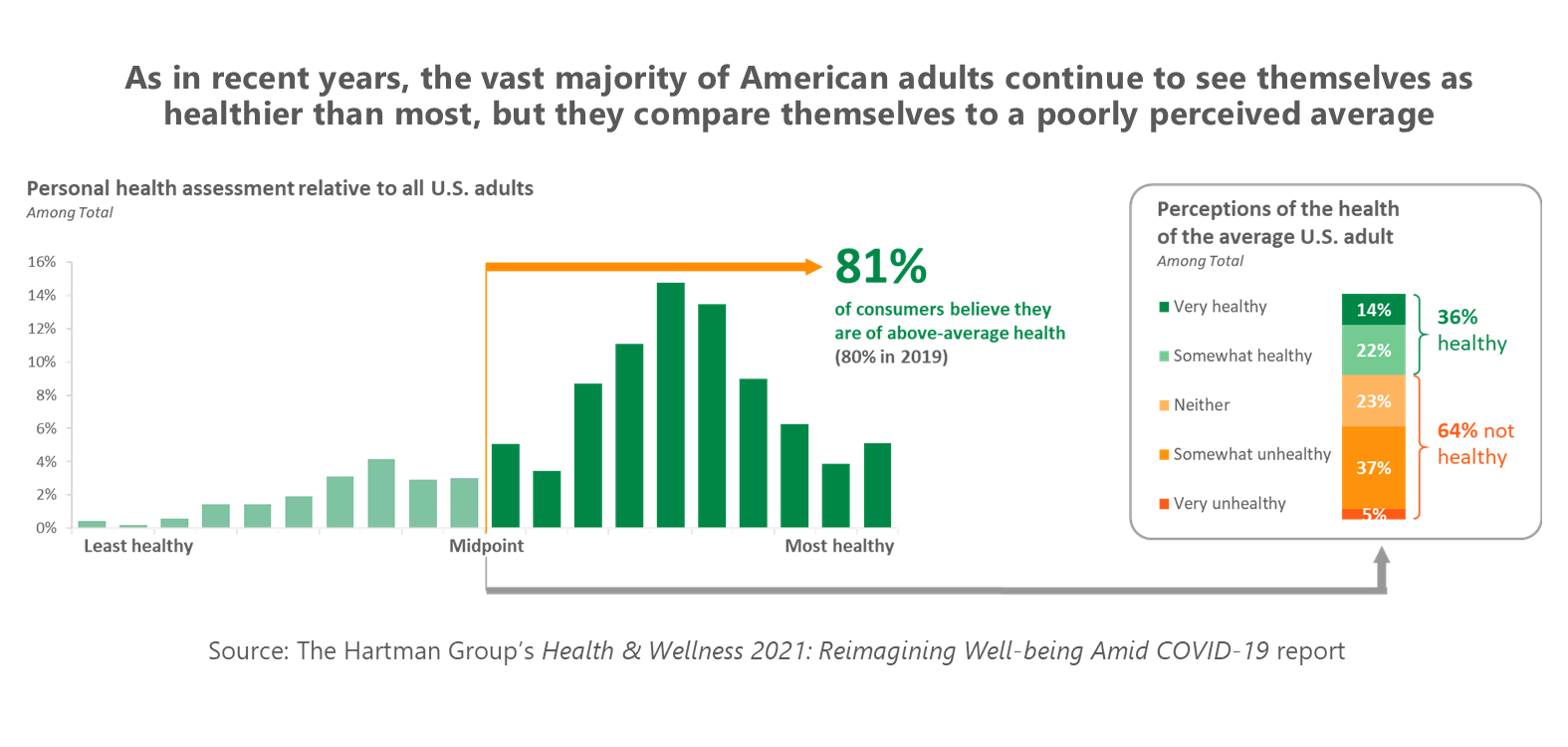Undoubtedly, we hav e been living through and experiencing a very interesting time, not just in American history but in our shared personal and professional lives. According to findings in our Health & Wellness 2021: Reimagining Well-being Amid COVID-19 report, the pandemic has had a profound impact on consumer sentiment. In this particular crisis, health is very much at the heart of the matter. Not just personal health but community health and collective health — the health of those around us.
e been living through and experiencing a very interesting time, not just in American history but in our shared personal and professional lives. According to findings in our Health & Wellness 2021: Reimagining Well-being Amid COVID-19 report, the pandemic has had a profound impact on consumer sentiment. In this particular crisis, health is very much at the heart of the matter. Not just personal health but community health and collective health — the health of those around us.
The pandemic has been a dynamic factor in changing the way that consumers think about wellness.
Gradual cultural shifts, global and domestic crises, and the momentum of social and environmental movements shape the American health and wellness landscape today. These overarching trends impact many of the results we saw in our research behind the Health & Wellness 2021 report.
Health and wellness in the U.S. has evolved as science, technology, consumers, and sociocultural factors influence what we need, believe, and value. These forces shape an increasingly holistic ideal of health and wellness that draws attention to individual needs, interconnected systems of the body, mental and emotional well-being, and more.
While 2020 brought unprecedented change on multiple fronts, the global spread of COVID-19 is the major driving force behind this change — but it is certainly not the only force, with environmental and social justice issues receiving a substantial share of public attention.
Certainly, concern about the environment and sustainability has been on a trajectory pre-COVID-19, but it is now becoming increasingly urgent in the minds of some consumers. Youth-led calls for climate action accompanied by extreme weather events and natural resource crises continue to translate changing climate to personal health concerns, such as air and water quality.
How Healthy Are You?
One of our favorite data points in the report speaks volumes about why we here at The Hartman Group talk so much about health. We find that consumers often voice their opinions about health, yet in many cases, consumers are not always taking substantive action.
In the quantitative survey for the study, we give consumers the ability to profile themselves versus all other U.S. adults. We basically are asking, “how healthy are you?”
We ask respondents to place themselves on a continuum of most healthy to least healthy in comparison to other U.S. adults. What we see here is that a full 81% of consumers believe they are above average health. We understand that some of these consumers can’t be right in their assessment; perhaps 31% are wrong. But there is this sense among consumers that “I’m not really doing so bad.”
We’ve only seen a one-point increase since our last Health & Wellness report in 2019. Prior to that, from 2017 to 2019, there was a four-point increase. The consumer sentiment around “doing better than everyone else” is actually on the increase. Why is this happening?
In part, it is because we judge our own health based on those around us. As the chart above depicts in the box on the right side, there is a strong sentiment across consumers that they think the majority of other U.S. adults are not doing that well. When we probe on this point in qualitative research, we hear people say that they tend to look around their social network, their friends, their family, their neighbors, their colleagues and assess themselves compared to others. Their takeaway is that they feel, “I’m really not doing that bad compared to others.”
They tell us that, sure, maybe I should lose some weight, maybe I should be a little bit healthier, but really, I'm not as bad off as many other people. So, this idea that we're all very interested in health and wellness, and in many cases we're starting to act on it, sometimes hits a wall when we find ourselves assessing our health in comparison to others and thinking, “maybe I don't have to do as much as I think.”
As consumers reevaluate wellness, their health and wellness routines, like their lives, are in flux.
“I've always been a weightlifting kind of guy. I lift things up and put things down—that was always my mantra… But this year I've been doing a lot more walking, a lot more cardio and yoga. That, to me, is all brand-new territory…”
¾David, Male, Millennial, Periphery
The above quote is from a consumer who's now doing a lot more yoga because he couldn't get out and do the weightlifting during COVID. We heard similar sentiments on different topic areas from a large number of consumers.
In response to the array of forces shaping H&W culture and household needs, consumers are experimenting with a wide range of wellness modalities — from trusted behaviors they are doing more of to those they have never tried before. Most consumers find that, under the circumstances, they must also pull back on some activities to accommodate life amid COVID-19. More than ever, consumers are open to reconfiguring health and wellness approaches where they are able.
This complexity of pandemic experience has shifted views on health and wellness and prompted adjustments of H&W routines in divergent ways. The result has been an ever more complex web of beliefs around what health and wellness means and how to achieve it, existing not only across the population but also within individual consumers’ definitions.
To get the full in-depth story about the state of the health and wellness marketplace today, get The Hartman Group’s Health & Wellness 2021: Reimagining Well-being Amid COVID-19 report. Order here


